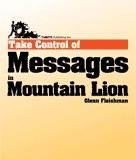More than 55% of organizations are running Software-as-a-Service (SaaS) applications on their corporate devices whether they know it or not, according to new research by Softchoice, a North American technology solutions and services provider.
The challenge isn’t necessarily that these apps are being used predominantly for file sharing, storage, and remote access. It’s that many of them are being used without proper oversight by IT departments, posing a serious threat to the security of corporate data, according to Softchoice.
“Shadow IT in the Enterprise: Softchoice SaaS Study 2013” examines the presence of SaaS on 7,200 corporate devices across 23 distinct organizations. The study reveals the most common apps in use today, the benefits and security risks posed by certain apps, and offers recommendations on how IT departments can best manage their use without squelching the benefits they deliver in terms of employee productivity and engagement.
“As the front office takes control of the enterprise technology spend, the back office is struggling to contain the transfer of corporate data through unsanctioned SaaS use,” says Mike Kane, Softchoice’s director of Cloud & Client Software. “While these apps increase productivity and the ease of doing business, they pose a significant security risk if used outside the central control of the corporate network.”
Highlights from Softchoice’s study, include:
° Over 80% of organizations are using some form of remote access app, indicating a clear trend towards BYOD and flexible working environments.
° Google’s suite of personal productivity apps is king in the enterprise, with Google Calendar appearing in 83% of businesses, Google Docs in 80%, and Google Drive in 75%.
° Contrary to popular belief, Microsoft SkyDrive is a top contender for online storage with 79% enterprise penetration — more than double that of Dropbox.
“SaaS applications, both mobile and desktop, are common in the workplace, but most of our clients are shocked to find out just how common they really are,” Kane adds. “SaaS is here to stay. And so it’s crucial for IT to shift their focus from resisting SaaS use to enabling and promoting responsible integration across the enterprise.”


